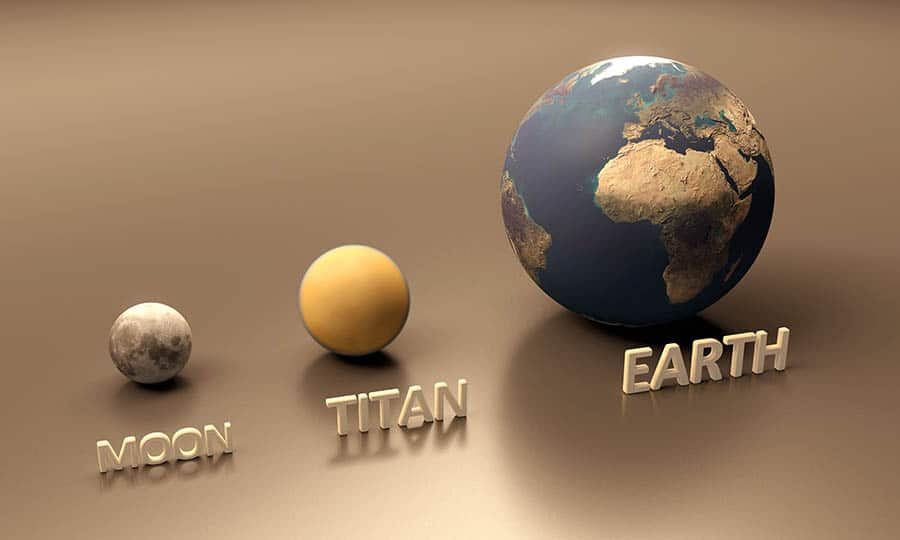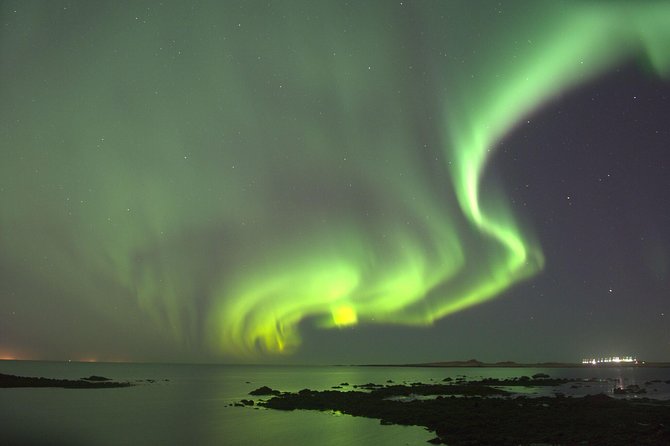13 Titan Moon Facts | Interesting Facts about Titan
The second largest moon in our entire solar system is named Titan, and it orbits the planet Saturn. Though astronomers aren’t quite sure about Titan’s origin, we know that it formed very early in the Solar System‘s lifetime. Let’s look at some facts about the moon Titan.

- Titan has an estimated radius of 1600 miles (2,574.7km).
- This makes Titan is the largest of Saturn’s moons, and the second largest moon of them all after Ganymede.
- Titan orbits Saturn at a massive distance of more than 886 million miles (1.4 billion km).
- It takes Titan 16 days for it to complete one full trip around Saturn because of the planets huge size.
- Titan takes it’s name from Greek mythology. The Titans were essentially the Gods before the Olympians (Zeus etc).
- Titan was discovered by Christian Huygens, a Dutch astronomer and physicist, in 1655.
- This moon has a relatively young surface, which has many different geological objects on it, including craters, cryovolcanoes and many mountains.
- The largest of these craters is named Menrva, and has a diameter of 270 miles (440km).
- Titan has an average temperature of approximately -180°c.
- Along with Ganymede, Titan is actually larger than the planet Mercury!
- Titan is the only moon in our solar system that has a thick, substantial atmosphere.
- The atmosphere of Titan is primarily made up of nitrogen. This is more common with objects in the Oort cloud, which suggests it may have originated there.
- Titan’s surface is estimated to be between 100 million and a billion years old, making much of it younger than other moons.
Many people know Titan as being the only moon that has a substantial atmosphere. Many moons have a thin atmosphere, but Titan’s atmosphere is much more than this – it is even thicker than the Earth’s atmosphere. It’s atmosphere is primarily made up of nitrogen, and is the only object in our solar system to have this volume of nitrogen. There is also some methane, hydrogen and trace amounts of other gases too. The atmosphere rotates around this moon much faster than it rotates itself, much like the planet Venus. What is most interesting about Titan is that the energy from the Sun really should have converted all of the methane into hydrocarbons over millions of years. This hasn’t happened, which suggests that there is a reservoir of methane on Titan itself.
Much has been said about the possibilities for humans to move to Titan in the distant future. The answer is that yes, there is oxygen on Titan. This essentially comes from the liquid water which is held both beneath the surface of Titan in an ocean, and also within lakes and rivers on it’s surface. So yes, Titan does have oxygen, which is why it’s considered a possibility for future colonization.
We don’t know everything about what’s beneath the surface of Titan, however thanks to the Cassini-Huygens space mission, we have an idea. Astronomers believe that the core of Titan is made from silicate rock. Outside of this is a thick shell of water ice, which is then surrounded by a liquid water (a subsurface ocean of saltwater). Then outside of this is another layer of water ice which forms the crust of the planet.
As mentioned earlier, Titan has an average temperature of approximately -180°c. This is very cold in comparison to Earth, but it is quite standard in comparison to other moons within it’s region, and this is pretty much the same temperature as Saturn itself. The reason why Titan is this cold is because of it’s distance from the Sun – Titan sees about 1% of the same sunlight that Earth does. So, it’s quite easy to understand why Titan is so cold.
The good news is that if you’re trying to see Titan with your telescope, then you can. It is the largest and the brightest of the moons of Saturn, therefore the easiest to see. Titan is covered in a orange haze, which is it’s atmosphere.
All in all, Titan is one of the most intriguing moons in our solar system. Along with Europa, it is one of the most talked about options for humans in terms of life beyond Earth and even Mars.
It has many different mountains and craters on it’s surface, and it’s easily visible from the Earth if you want to see it yourself. Overall, Titan is an impressive moon with many facts to learn about.



